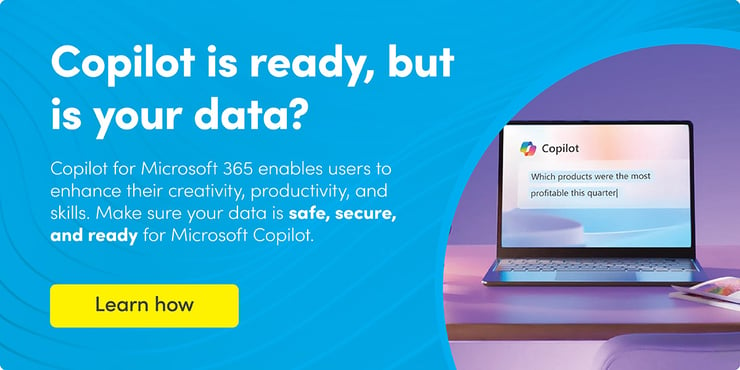Small vs. Large Language Models: Which One Reigns Supreme?
Everyone, I mean everyone, is flooded with news about AI. It's inescapable. Due to its popularity, many are quickly learning the vocabulary associated with AI to stay current with the times. At the same time, others are getting their toes wet in prompt engineering and taking courses in AI to ride the recent wave of interest in this tech. In that pursuit, I've been keeping my ears peeled for news on new AI breakthroughs. Somehow, however, the word of small language models had yet to enter my sphere of knowledge, and therefore, I was unaware of such a thing. However, thank goodness for my colleague who brought it up on a recent call. During Ignite 2023, Microsoft announced its small language model, Phi-2. Microsoft Research Debuts Phi-2, New Small Language Model (techrepublic.com) In language models, even though we're using the words small and large, understand that we're still looking at billions of parameters in either model. Discover the critical differences between Small and Large Language Models and explore the benefits of each. Learn when and where it is best to use one over the other, supported by real-world examples and credible sources.
Understanding Language Models
Language models are powerful tools in natural language processing (NLP) and artificial intelligence (AI). They understand and can generate human-like text due to the patterns and information they were trained on.
Small language models refer to models with fewer parameters, which means they have limited capacity to process and generate text compared to large language models. On the other hand, large language models have significantly more parameters and can handle more complex language tasks.
Simply put, small language models are like compact cars, while large language models are like luxury SUVs. Both have their advantages and use cases, depending on a task's specific requirements and constraints.
Advantages of Small Language Models
Small language models have several advantages:
- Efficiency: Small language models require less computational power and memory, making them faster to train and deploy. They are suitable for applications with limited resources or time constraints.
- Lower Cost: Training and maintaining small language models is generally less expensive than large ones, as they require fewer computational resources.
- Domain-Specific Tasks: Small language models can be fine-tuned for specific domains or tasks, resulting in better performance and understanding within those particular areas.
For example, a small language model could be sufficient and cost-effective if you need a language model to generate short product descriptions for an e-commerce website.
Advantages of Large Language Models
Large language models offer several advantages:
- Enhanced Performance: Large language models have more parameters, enabling them to understand and generate more complex and contextually relevant text. They often outperform small language models on various language tasks.
- Broader Context: Large language models have been trained on vast amounts of diverse data, allowing them to capture various language patterns and contexts. This makes them more suitable for tasks that require a deep understanding of language nuances.
- Generalization: Large language models can generalize well to different domains and tasks, even without fine-tuning specific datasets.
For example, large language models like GPT-3 and GPT-4 have generated human-like stories, translated languages, and even written code snippets.
Choosing the Right Language Model
Choosing the right language model depends on various factors:
- Task Requirements: Consider the complexity and specific requirements of the task at hand. A small language model may suffice if the task involves generating short text snippets. A large language model would suit more complex tasks requiring deeper understanding and context.
- Available Resources: Assess the computational power, memory, and budget constraints. A small language model may be better if resources are limited due to its efficiency and lower cost.
- Domain Specificity: If the task is highly domain-specific, fine-tuning a small language model for that domain can yield better results than a large, generic model.
It's essential to evaluate the trade-offs between model size, performance, and resource requirements to make an informed decision.
Real-World Examples
Here are some real-world examples showcasing the use of small and large language models:
- Small Language Model Example: A customer service chatbot for a specific industry, such as banking or insurance, can use a small language model fine-tuned on industry-specific data. This allows the chatbot to understand and respond accurately to customer queries within that domain.
- Large Language Model Example: OpenAI's Chat GPT is being utilized by organizations as a virtual assistant (powered by AI) that can perform various tasks, answer complex questions, generate code, or even be integrated into other applications as answering agents.
Conclusion
Whether it's an SLM or LLM that becomes the leading horse of AI, the technology has a long road ahead full of user adoption dilemmas, compliance and legal battles, and trust and oversight hearings. For example, in The Atlantic, the article claims that in a recent report, over 191,000 books were used to train LLMs by Meta, Bloomberg, and others without the author's explicit permission. And according to OpenAI's CEO, Sam Altman, GPT-4 trained on 45 gigabytes of data. Companies focusing on developing and using this technology must have privacy and data security as central pillars at the forefront.
With the above comparisons and analogies, choosing a small or large language model is genuinely based on the entity's need, preference, and budget. As we continue to see the development of AI tools, the demand for greater computing power and the need to create sustainable technologies may push the market into a small language model direction. I'm no fortune teller. Last year, this time, AI was even a buzzword in my space; now, it's used daily on our team.
Harness the power of artificial intelligence (AI) in your organization with Microsoft 365 Copilot. If your organization wants to improve productivity by using Microsoft Copilot, Synergy Technical can help. Our Microsoft 365 Copilot Readiness Assessment will validate your organization's readiness for Copilot as well as provide recommendations for configuration changes prior to implementation. We'll help you make sure that your data is safe, secure, and ready for your Copilot deployment.





Comments